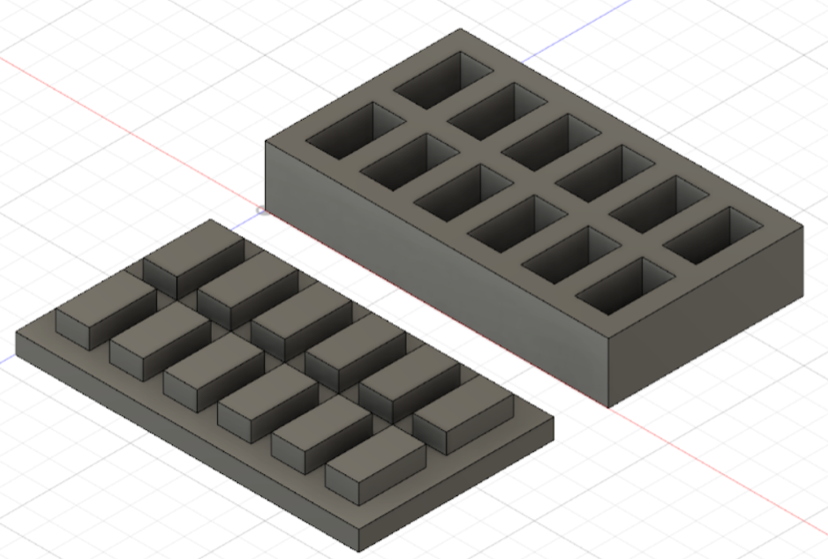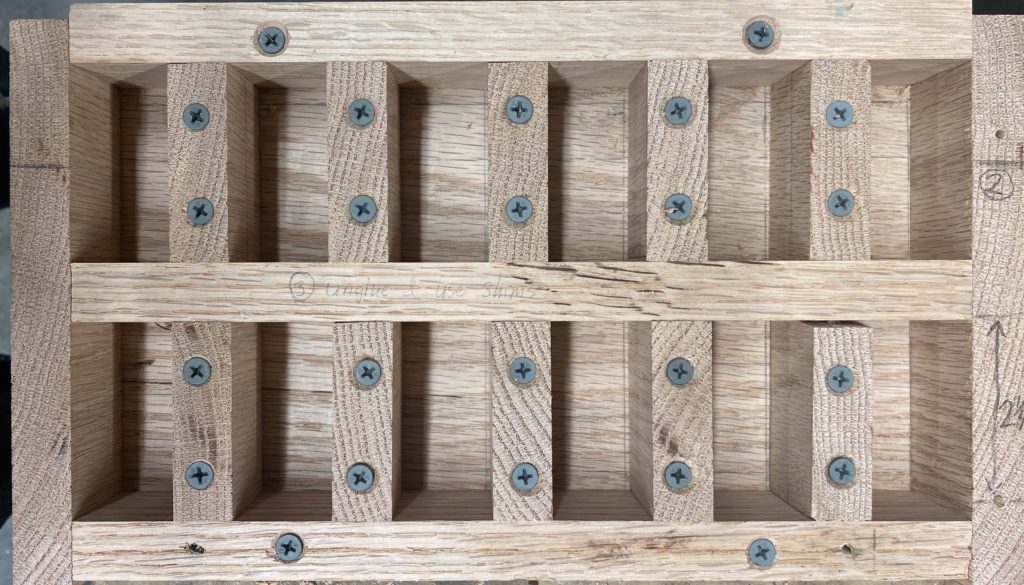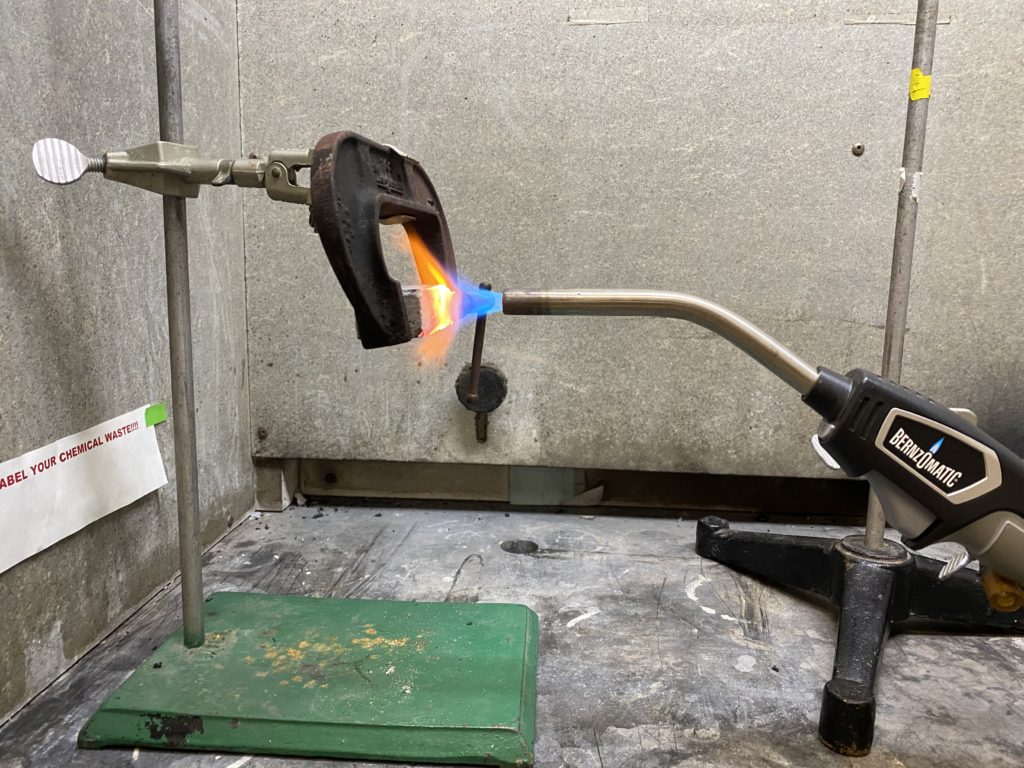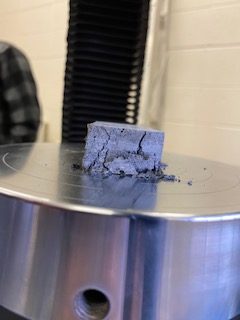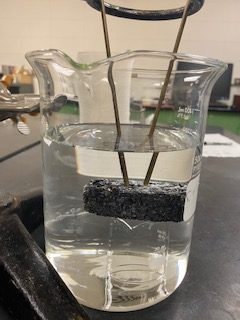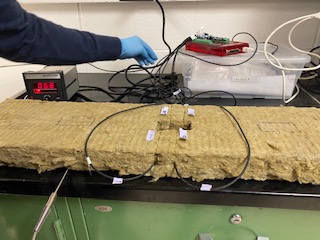Team Members
Maxwell Barton
Joshua Kim
Brina Patel
Aime Laurent Twizerimana
Supervisors
Clair Cunningham, Chemical Engineering
Customer
Ithaka Institute
Description
Our goal was to create and characterize full scale bricks based on prototypes that are comparable to other building materials for implementation in residential and academic buildings in developing countries. Bricks will be of two types: (1) Biochar and Cement and (2) Biochar, Plastic, and Additives. Characterization consists of hardness, water absorption, insulation value, compressive strength, and flammability tests on prototype bricks.
A Snapshot of Team Jackalope
Who are we?
Team Jackalope consists of four very powerful jackalopes who have taken home in Gavett 145. They live off of softwood biochar and enjoy making bricks for their friends. Occasionally, they hop over to Gavett 119 to weigh their creations and visit with their advisor.

Our favorite prototype brick
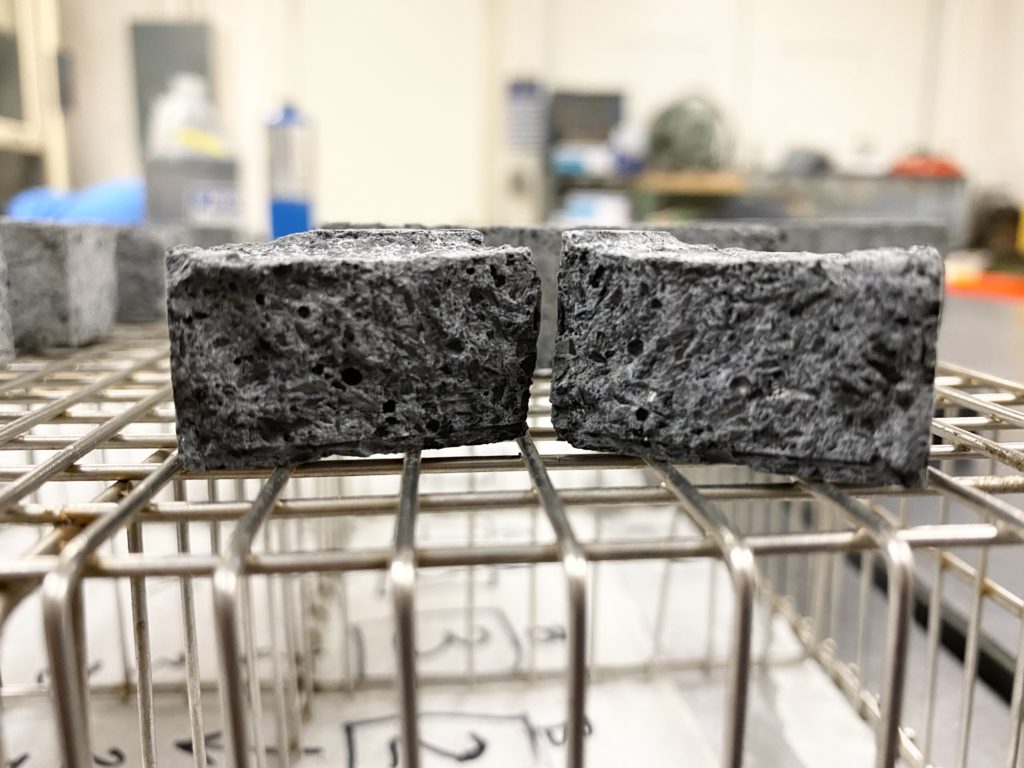
What were we doing?
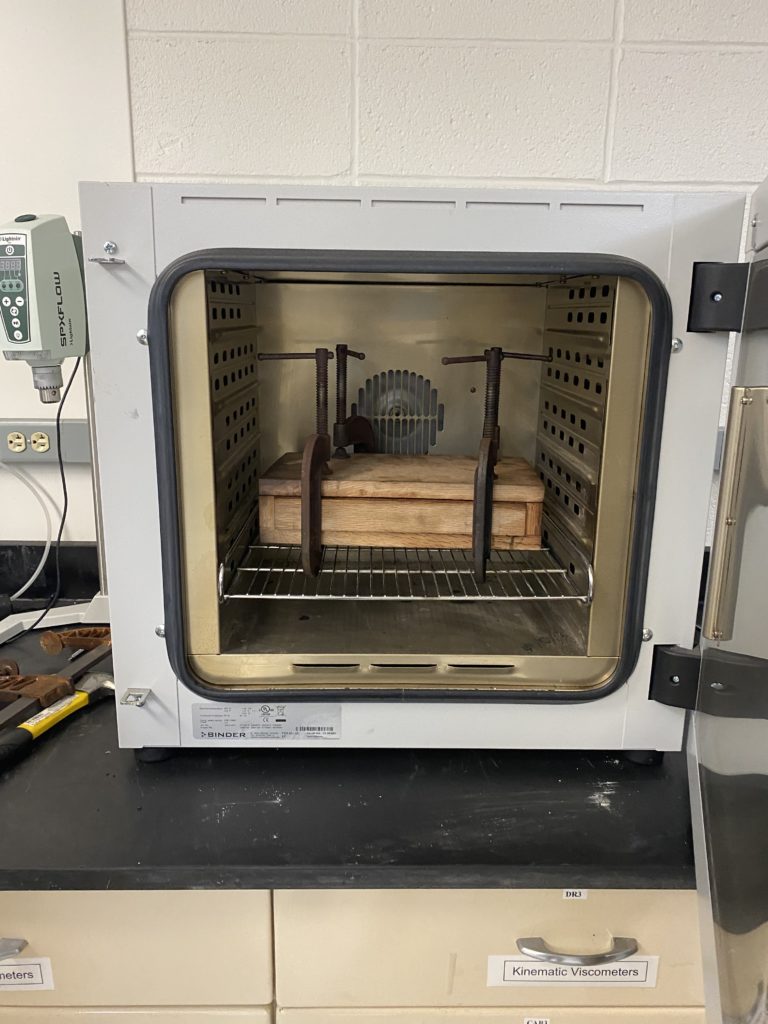
- Characterization of 75% biochar, 25% cement brick (not changing ratios)
- Exploration of biochar, plastic, and additives bricks
- Characterization of above bricks
- Implementation of the design cycle throughout experiments to optimize prototypes
The figure shows our prototype plastic bricks cooking in the oven!
Project Background
The project consists of evaluating biochar bricks as building materials for implementation in third world countries for residential and academic buildings. This topic is important to explore due to the limited knowledge on biochar building materials and the potential to reduce global CO2 emissions, recycle organic and plastic waste materials, and create more jobs for the residents in these countries. Biochar is a charcoal-like substance made from organic matter decomposition at high temperatures in the absence of oxygen [1]. The current usages consist of soil additives to improve water absorption, plaster to capture humidity, and energy alternatives to replace fossil fuels [2].
What are the benefits of biochar?
Using biochar in building materials will reduce much of the greenhouse emissions and pollution caused by waste plastics, concrete, and organic waste. By sequestering the carbon from organic waste materials, biochar reduces the methane and carbon dioxide emissions released from landfill gas. If all of organic waste from landfills were to be converted to biochar, the reduction in landfill gas would amount to a potential 11% global reduction in human-sourced methane emissions [3]. Furthermore, the addition of biochar in concrete bricks would reduce the amount of used cement, and thus, reducing the carbon dioxide released in the process. The current brick available for testing is composed of three parts biochar and one part portland cement. If these composite bricks are scaled globally, there is potential for a 6% decrease in the original 8% global carbon dioxide emissions produced from cement [4]. Biochar can be used with waste plastic to create bricks to reduce global plastic waste as well. This was one of the routes Team Jackalope explored to see the viability of the brick in comparison to the biochar and cement and concrete.
What does the previous work look like?
The previous work conducted with biochar consists of a plaster, an energy source, and a soil additive among other uses. The plaster composition is 50% biochar, 30% clay, and 20% sand, and it serves as an alternative to styrofoam insulation. This type of plaster allows houses to become carbon sinks as it absorbs smells and toxins. It has the potential to be implemented in hospitals, factories, and residential places among other buildings. As previously mentioned, the water absorption ability and low thermal conductivity allows for the biochar plaster to be an ideal replacement for insulation [5]. Next, biochar has been implemented as a carbon neutral energy source, but was proven to be an expensive process due to the pyrolysis process of certain biomass [6]. Therefore, this use of biochar is not observed in many places, but with more research and testing, it has the potential to serve as a cost-effective energy source. The steps toward a bioenergy world with biochar would start at the potential genetic engineering of plants to produce more biomass to convert to biochar. The last and most common use of biochar consists of it as a soil additive to improve soil quality through the retention of nutrients and water. It also has the ability to sequester carbon in the soil. However, this does allow for perturbation of the soil and subsequent release of carbon into the atmosphere. Alternative uses of biochar consists of waste management and air quality control [6].
Methods
Let’s dive into our prototypes!
Making the oak mold was completed with the help of Jim Alkins in the Rettner machine shop. Oak was used in favor of its high flammability temperature. The mold was constructed with twelve separate spots for prototype bricks. The top of the mold was made in order to smooth out the top of the prototype bricks.
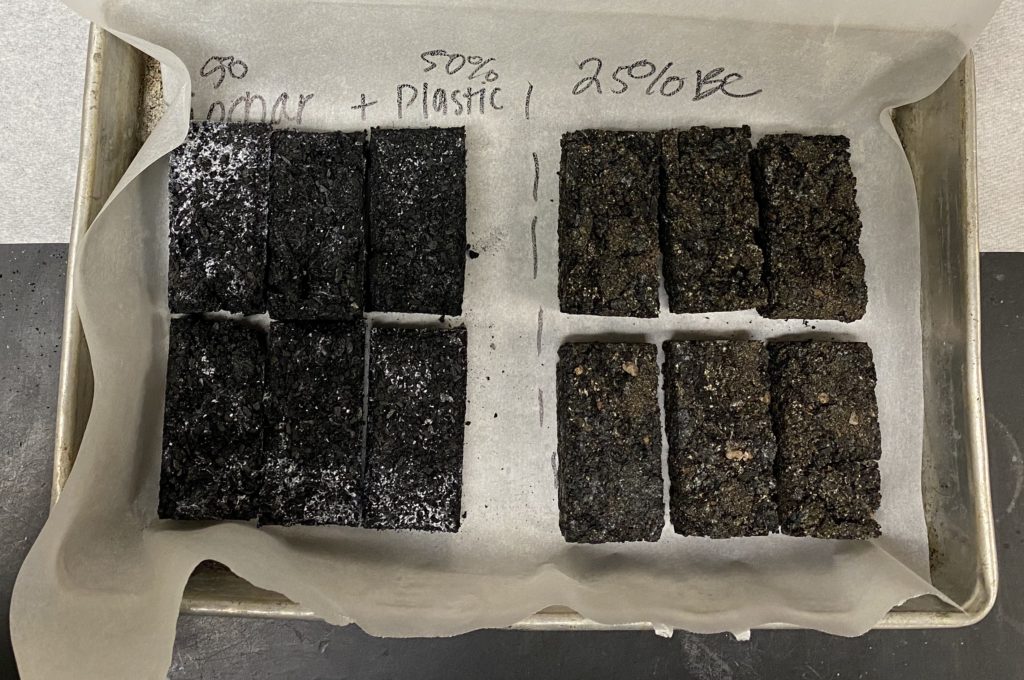
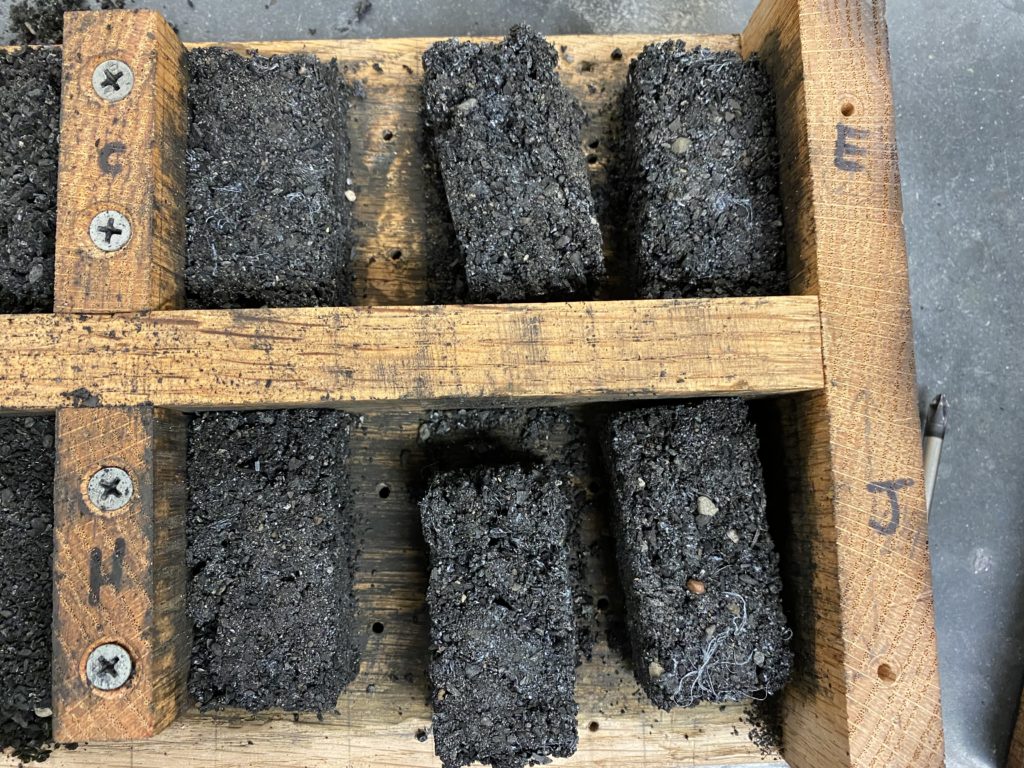
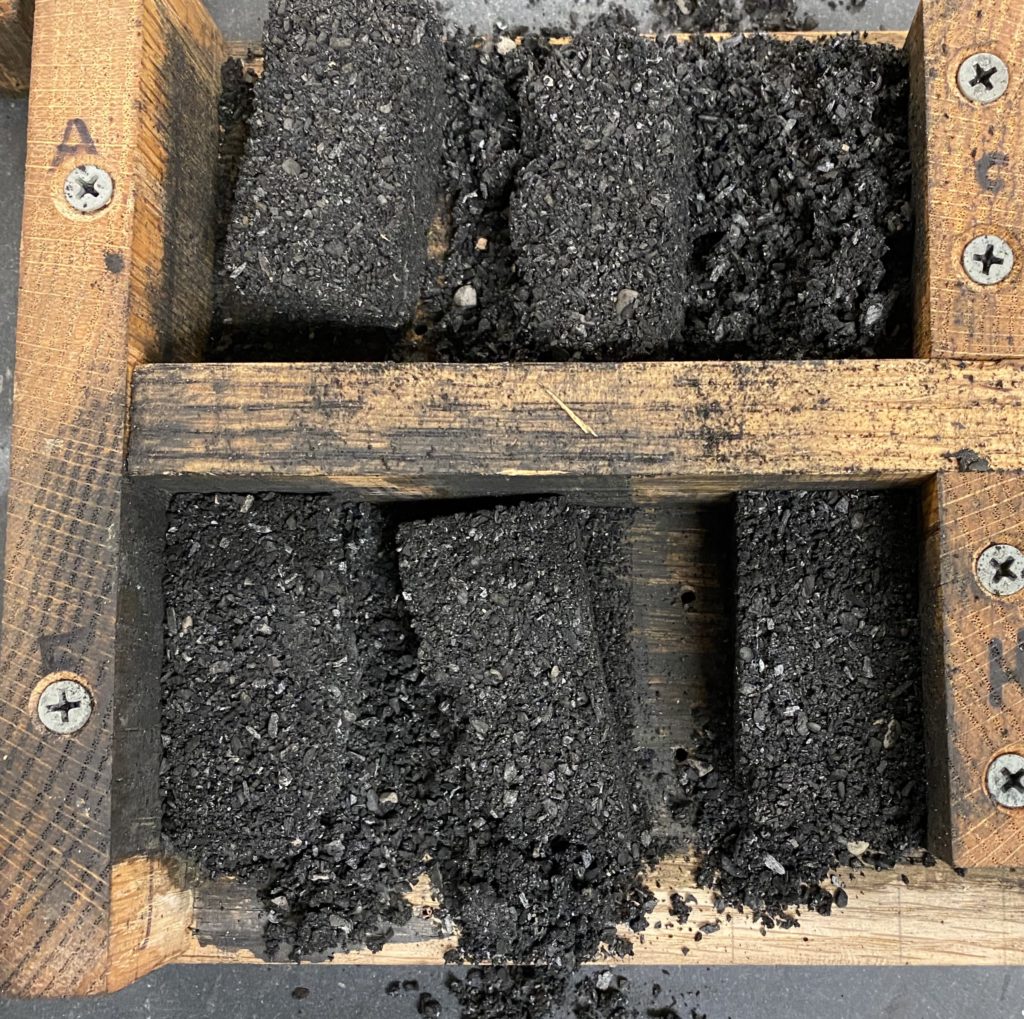
All bricks were made in a similar manner that consisted of mixing the components of the biochar, plastic, and additives and placing it in the oven for the plastic to melt under compression. More details can be found in Team Jackalope’s paper found below.
Design of Experiments
Team Jackalope conducted five tests on each of the prototype bricks made and results were obtained for each trial. Check out Team Jackalope’s paper below to see the detailed procedures!
Check out our pictures from our various tests on our prototype bricks!
Results
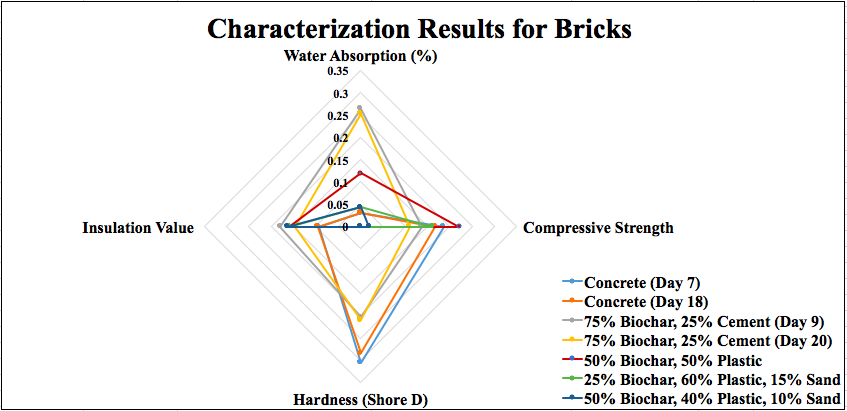
- The figure allows for a simple representation of results obtained on a normalized scale and allows for a quick selection of the best brick in the parameter of interest.
- As each parameter is scaled radially from the center, the performance of each brick can be easily identified. The vertices at each parameter show the best brick prototypes for that test, and conversely a point closer to the origin shows a prototype that performed poorly for that parameter.
- For example, the 50% biochar, 50% plastic brick ranked highest in compressive strength, but fell below the biochar and cement brick in water absorption, insulation value, and hardness.
To see detailed results from each test, please see the Team Jackalope’s document below!
Let’s go into the lab to see all the ~fun~ Team Jackalope had!
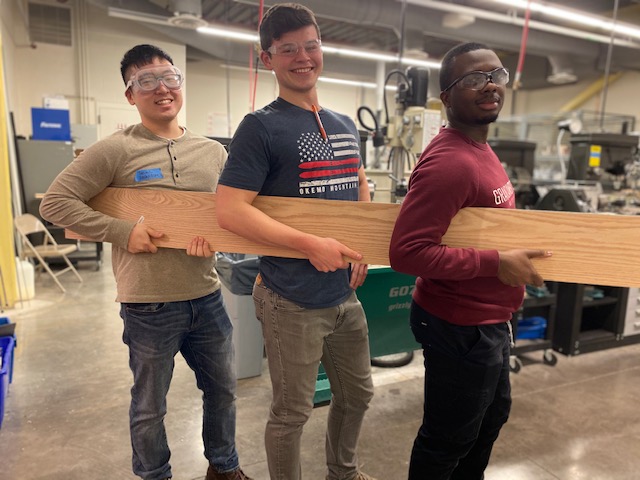
Team Jackalope with our Oak! 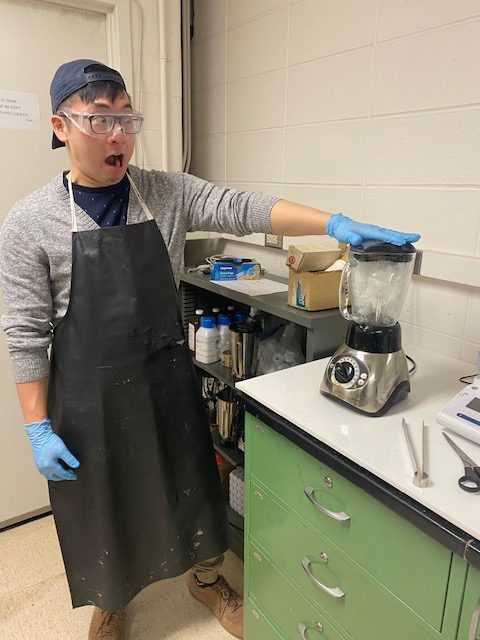
Josh blending plastic! 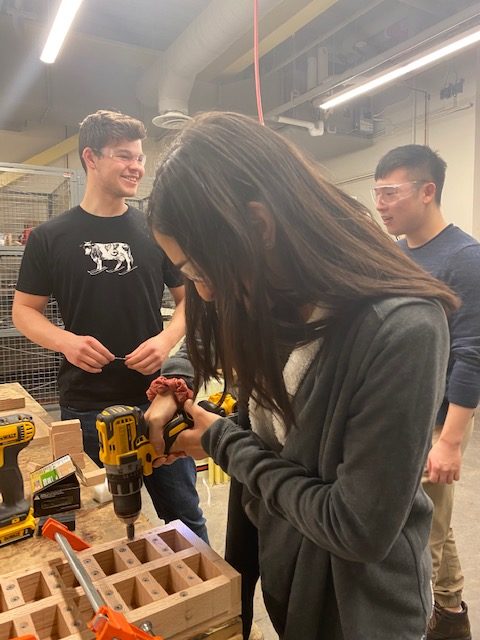
Brina’s first time! 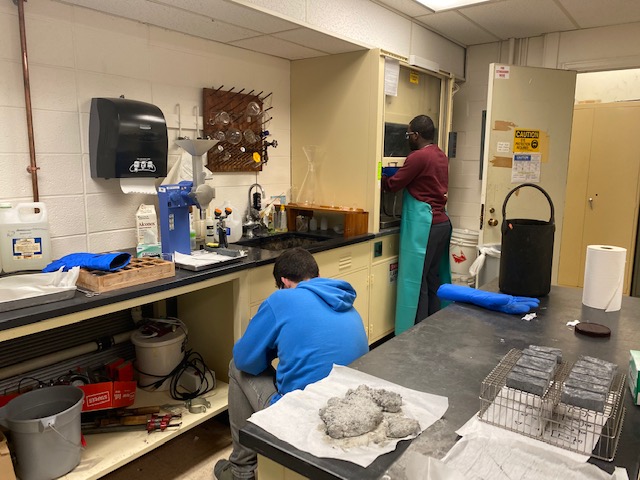
Safety first with our concrete Jackalope!
Applications
The results from this project are indicative of a promising future for biochar bricks as a building material. However, due to time constraints, the project would need to be continued to confirm results and conduct a wider range of tests. A practical application of this work leads to usage of biochar bricks as brick veneer. Potential applications of biochar bricks can be as an insulator to other building materials, pavement bricks, and roof tiles.
While the applications of biochar bricks appear to be numerous, many tests should be done to confirm the feasibility of the applications. Brick veneer is an application that Team Jackalope can confidently say would be an appropriate application of the current biochar bricks. Biochar bricks would make good veneer because they have an easily manipulated shape and surface during molding, are very good insulators, and quite light compared to classic bricks. The high R-value and light weight of the bricks would help cut down on necessary insulation and structural support components of the wall using the veneer. However, brick veneer is not commonly used anymore and certainly not used in developing countries. Additionally, the bricks were not tested in long term erosion tests such as sun exposure or weathering, which limits the current applications to indoor veneer.
[1] Yip, Kongvui, et al. “Effect of Alkali and Alkaline Earth Metallic Species on Biochar Reactivity and Syngas Compositions during Steam Gasification.” Energy and Fuels, ACS Publications. 24 Jul. 2009. https://pubs.acs.org/doi/full/10.1021/ef900534n
[2] Joseph, S D, et al. “Biochar for Carbon Sequestration, Reduction of Greenhouse Gas Emissions and Enhancement of Soil Fertility; A Review of the Material Science.” Researchgate.net, 9 Dec. 2007,www.researchgate.net/publication/228483265_Biochar_for_Carbon_Sequestration_Reduction_of_Greenhouse_Gas_Emissions_and_Enhancement_of_Soil_Fertility_A_Review_of_the_MaterialsScience.
[3] Global Methane Initiative. “Landfill Methane:Reducing Emissions, Advancing Recovery and Use Opportunities.” Globalmethane.org, Sept. 2011, www.globalmethane.org/documents/landfill_fs_eng.pdf.
[4] Rodgers, Lucy. “Climate Change: The Massive CO2 Emitter You May Not Know About.” BBC News, BBC, 17 Dec. 2018, www.bbc.com/news/science-environment-46455844.
[5] “Biochar as Building Material.” Ithaka Institute – Building Material, Ithaka Institute, www.ithaka-institut.org/en/ct/97.
[6] “Potential Uses of Biochar.” Access Science, McGraw-Hill Education, 1 Jan. 1970, www.accessscience.com/content/potential-uses-of-biochar/BR111816

